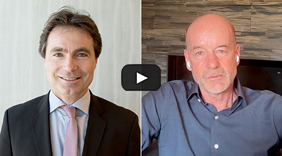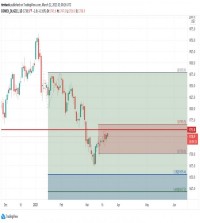|
Opalesque Industry Update - Macro hedge funds produced gains through the volatile month of October as volatility surged on a spike in geopolitical and interest rate risk, with
equities and bonds exhibiting the same dangerous correlated declines as the prior month. The HFRI Macro (Asset Weighted) Index advanced +0.7 percent in October, the third
consecutive month of positive performance, bringing the trailing three-month return to an impressive gain of +4.2 percent.
Overall, hedge funds posted mixed performance in the volatile month of October, as equities traded in a wide range, interest rates continued to rise on persistent inflation concerns, and geopolitical risks spiked with the outbreak of military conflict in Israel. Through this intense volatility and led by Macro and Relative Value Arbitrage, the HFRI Asset Weighted Composite Index® (FWC) was essentially unchanged for the month, posting a narrow decline of -0.02 percent. The HFRI Fund Weighted Composite Index, which applies equal weights to all constituent funds, declined -1.4 percent for the month. Performance dispersion declined slightly in October, as the top decile of the HFRI FWC constituents advanced by an average of +4.0 percent, while the bottom decile fell by an average of -8.8 percent, representing a top/bottom dispersion of 12.8 percent for the month. By comparison, the top/bottom performance dispersion in September was 13.4 percent. Through the first ten months of the year, the top decile of FWC constituents gained +22.7 percent, while the bottom decile declined -16.6 percent, representing a top/bottom dispersion of 39.3 percent. Approximately thirty percent of hedge funds posted positive performance in October. Effectively navigating the third consecutive month of extreme volatility, the HFRI Macro (Asset Weighted) Index gained +0.7 percent in October, increasing its YTD 2023 return to +2.6 percent, as equities posted sharp, correlated declines on rising rates and expectations for weakening economic growth. Macro sub-strategy performance was led by fundamental discretionary strategies as well as active trading strategies, with the HFRI 500 Macro: Discretionary Thematic Index gaining +1.6 percent, while the HFRI Macro: Active Trading Index added +0.42 percent for the month. The HFRI Macro: Currency Index advanced +0.2 percent in October, while the HFRI Macro: Commodity Index declined -2.9 percent. Fixed income-based, interest rate-sensitive strategies also posted a narrow gain for October as interest rates surged, with the HFRI 500 Relative Value Index adding +0.2 percent. RVA sub-strategy performance was led by volatility and sovereign bond exposures, with the HFRI RVA: Volatility Index gaining +0.8 percent, while the HFRI RVA: Sovereign Index advanced +1.1 percent. These gains were partially offset by a decline in the HFRI RV: Convertible Arbitrage Index, which fell -1.5 percent. Equity Hedge funds, which invest long and short across specialized sub-strategies, posted declines in October, with negative contributions from Technology and Energy exposures; the HFRI Equity Hedge Index (Asset Weighted) declined -0.7 percent in October. EH sub-strategy declines were led by the HFRI EH: Technology Index fell an estimated -2.2 percent and the HFRI EH: Energy/Basic Materials Index which declined -2.7 percent. Event-Driven strategies, which often focus on out-of-favor, deep value equity exposures and speculation on M&A situations, posted declines in October as equity and rate volatility surged, driven by losses in Shareholder Activist and Distressed sub-strategies; the HFRI 500 Event Driven (Total) Index fell -1.6 percent for the month. ED sub- strategy declines were led by the HFRI 500 ED: Distressed Index, which fell -2.4 percent for the month, while the HFRI 500 ED: Activist Index lost -2.0 percent. Liquid Alternative UCITS strategies also posted mixed performance in October as uncorrelated Macro gains offset Directional declines; the HFRX Absolute Return Index fell -0.35 percent for the month, while the HFRX Global Index lost -0.82 percent. Performance declines were led by the HFRX Event Driven Index, which fell -1.2 percent in October, partially offsetting the HFRX Macro Index which gained +0.3 percent. The HFRI Diversity Index declined -1.3 percent in October while the HFRI Women Index fell by an estimated -1.1 percent. "Extending and accelerating the leadership trends of September, the volatile month of October saw Macro hedge funds and the industry's largest firms post gains and lead industry performance as both bonds and equities posted steep declines in a correlated manner, interest rates hit recent highs, and inflationary pressures remained strong, while complex geopolitical risks spiked with the outbreak of military conflict in Israel. Top Macro hedge funds posted strong gains led by fundamental and trading focused strategies, with the industry's largest funds driving gains in asset weighted composites for the month," stated Kenneth J. Heinz, President of HFR. "In addition to Macro, interest rate-sensitive, fixed income based Relative Value Arbitrage strategies also posted narrow gains through the volatile month, once again demonstrating strong defensive positioning and opportunistic trading as interest rates increased. Continuing this powerful trend and again led by the industry's largest funds, managers remain aggressive and opportunistically positioned for acceleration of this financial market volatility, with an increased likelihood of destabilizing dislocations. As with the previous month, institutions interested in a combination of opportunistic exposure to these powerful trends, as well as defensive capital preservation through the volatility, are likely to increase allocations to managers which have generated strong performance through these recent market headwinds."
|
Industry Updates
Macro, relative value lead HFRI in October as geopolitical, interest rate risks spike
Tuesday, November 07, 2023
|
|





 RSS
RSS









